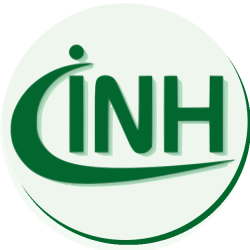
Health economics is an established science. It provides the basis for how modern health care systems function in themselves and in economic environments. It defines a framework for decisions on sustainable health policy under the special economic criteria of this field.
Tina Salomon is a researching and teaching health economist in Bremen, Germany. She co-signed our Open Letter to Minister Spahn. On this occasion an exchange of views has taken place, as a result of which we are pleased to publish a guest article by her on the “20 million Euro statement” today. This makes it clear how much Mr Spahn, with his nonchalance, is basically moving outside the real context of the problem, not to say ignoring it in favour of a “ministerial decision” that appears to be down-to-earth.We thank Tina Salomon very much and recommend her text for attentive reading. Her decidedly health-economic view and the homeopathy-critical view of the INH meet in the simple sentence: “Nothing is always too expensive”. There is no room for sweets from the Minister of Health’s bag of goodies. With no justification.
We have published a summary of the following article (“TL:DR”) under the heading “Briefly explained”.
This is not “so okay” – not from a medical, not from a health policy and certainly not from a health economic point of view!
This is not BuzzFeed or the Huffington Post, but it is still the right place for a thoroughly emotionalized statement on the question of why I, as a health economist, am personally affected by Jens Spahn’s “only 20 million” argument. As the INH emphasizes again and again, the question of how much money is spent on homeopathic medication within the framework of the statutory health insurance (GKV) is not in the foreground, which of course does not mean that Jens Spahn’s argument is valid on this point.
Because it is by no means. “Only 20 million” is not an economic argument.
And here’s why.
Every discipline has its “founding documents”: The scientific publications that became the starting point for further research in this field and thus set the course for the scientific discussion of social challenges. There are also a number of such papers in health economics – and since science thrives on dissent, there is probably only limited agreement among health economists as to which publications should be included. But: my two cents, my rules. For this article I have given some thought to my top 3 and have chosen the following papers, which I can only recommend to anyone who wants to read up on health economics in order to have a say (not only) in the homeopathic debate:
-
- Arrow, Kenneth (1963): “Uncertainty and the Welfare Economics of Medical Care”, American Economic Review, 53(5): 941 – 973.
- Neuhauser, Duncan & Lewicki, Ann (1975): “What Do We Gain from the Sixth Stool Guaiac?”, New England Journal of Medicine, 293: 226 – 228.
- Sackett, David; Rosenberg, William; Gray, Muir; Haynes, Brian; Richardson, Scott (1996): “Evidence based medicine: what it is and what it isn’t (Editorial)”, British Medical Journal, 312: 71st .
Did you notice that two of the three papers from my top 3 were not published in economic journals but in medical journals? This “balancing act” between the disciplines illustrates the field of tension in which health economics operates – and it makes it clear why there should not be a nonchalant “only 20 million Euros” here. Neither from a medical, nor from a health policy point of view, and certainly not from a health economic point of view.
Every single one of the three papers contributes to forming an opinion on homeopathic reimbursement – and every single one of the three papers contains strong economic arguments against reimbursement, whereby it is completely irrelevant whether homeopathy is or should be reimbursed as a regular or statutory service or as part of an elective tariff. The argument is congruent with the core statement of the INH: The effect of homeopathy does not go beyond the placebo effect and therefore it is completely irrelevant how the reimbursement is justified. The “only 20 million”, which Jens Spahn uses in his justification (and which I consider a PIDOOMA), we need more urgently elsewhere.
The first of the three papers, Arrow (1963), deals with the question of how individual behaviour is changed by insurance. Arrow, a mathematician, economist, Nobel Prize winner and US American, advocated social insurance against illness. At the same time, however, he also issued a warning, because the possibility of passing on the costs of using health services to the general public changes individual behaviour: The insured person takes advantage of services that he would not take advantage of if he had to pay for them himself. Not because he could not afford it otherwise, but because these measures would otherwise not be worth it to him: The expected individual benefit is too small to justify the costs for the individual. [1]
Neuhauser and Lewicki (1975), a health scientist and a doctor, show that the marginal principle, which economists know as Gossen’s First and Second Law from Microeconomics, also applies to the health care system. They use a simple calculation that can be understood by everyone and, with colorectal cancer screening, a relevant example in terms of health policy. The starting point is false-negative findings, because even the best screening in the world still has cases of disease that are not correctly detected. If screening is now used with the aim of finding all cases of disease, several rounds are necessary in which an almost constant number of people are tested for colorectal cancer. However, the yield in terms of detected cases of disease decreases with each round. In the first screening round, most cases are detected and the benefit to cost ratio is as good as possible. In the second round, far fewer cases are detected, but there are still many people to be screened, so the cost-benefit ratio deteriorates. And at some point the screening strategy reaches a point where a further round is no longer justified because although a large number of people are screened, hardly any cases are detected. In Neuhauser and Lewicki (1975), even in the sixth round of screening (Sixth Stool Gaiac) there was still a risk that a colorectal cancer case would go undetected. And yes, undetected colorectal cancer is a fatal disease, which is why considerable effort and high costs are justified in order to diagnose cases early. However, when you realise that we are talking about money that is not available elsewhere, you have to ask yourself whether 47 million in non-inflation-adjusted US dollars from 1975 for the chance to detect even the last case is still justified – or whether this 47 million could not be better used elsewhere and save more lives.
Finally, Sackett et al (1996) define evidence-based medicine as the “conscientious, explicit, and judicious use of current best external scientific evidence in making decisions about the care of individual patients”. This small editorial in the British Medical Journal is a turning point from both a medical and economic perspective. From a medical point of view, the revolutionary content of the article is to move away from theoretical considerations of the principles of action and towards empirical verification of the actual effect. It is completely irrelevant how extensively the theory of “water memory” is substantiated and how plausible this closed body of ideas may sound to the layman in the natural sciences. It is irrelevant how many “experts” speak out in favour of homeopathy, because they want to have had good experiences with it in individual cases. Relevant is only the proof of a statistically significant, clinically relevant effect. [2]
For health economists, who are not concerned with the individual treatment situation but with health policy decisions, this paper is so important because it provides them with a suitable decision-making criterion for the often difficult distinction between “reimbursable” and “non-reimbursable”: If there is a measure that already has no place in the individual treatment situation because no effect can be proven, then there can be no health policy reason to reimburse this measure – completely independent of how cheap or expensive the measures are in absolute amounts.
What can we learn from these three papers – and why is this relevant to the discussion on the reimbursement of homeopathy? Firstly, we can learn from them that the basic concept of scarcity, which defines economics as a discipline, has not been abolished for medicine and health care. We are a rich country, the standard of care in Germany is high and the SHI system, which is characterised by self-administration, is deliberately designed as a system open to innovation. Health expenditure at the societal level is not determined as a budget ex ante, but according to need. In the Federal Joint Committee, and especially in the area of services provided on an outpatient basis, representatives of service providers and service financiers jointly decide on the question of which innovations should be included in the catalogue of services, thus ensuring that innovations can be incorporated into regular care. This could perhaps be done more quickly, but on the whole it has led to a very high level of care by international standards – and it is just because the level of care is so high that we need to have a discussion at present on whether we can afford to reimburse measures that we know are not working.
Because we also learn something else from the articles, namely that there is a difference between an individual and a collective decision. The individual doctor may, should and must decide differently from Jens Spahn, who decides for us, the insured as a community. In the context of an individual treatment decision, utilitarian arguments do not play a role: If colorectal cancer is suspected, the necessary tests must be carried out, even if they are cost-intensive. The orientation towards the needs-based rather than the budget-based principle is a great strength of our health care system worthy of protection. But for our health care system to be able to afford this and for rationing decisions not to be made more than absolutely necessary by budgeting to the individual physician, delegated to the individual physician, it is necessary that the collective actors in health policy, first and foremost the Minister of Health, but also self-government, act consistently. Here there is no “only 20 million euros”, here there is only the distinction between “effective” and “not effective”, because since the triumph of evidence-based medicine in the mid-1990s this has been the criterion that draws the line between “reimbursement” and “no reimbursement”.
In 1976, when the Medicines Act (AMG) was passed, this development was not yet foreseeable. At that time the question of whether globules and other homeopathic dosage forms should be reimbursed did not even arise. The AMG is not a socio-political law, but serves to avert dangers in consumer protection [3], which is why the hurdle for approval was deliberately kept low. For homeopathic drugs it was lowered even further, precisely because the legislator could not assume a general effect or side effects even then. These products can therefore be registered, which means that they only have to be registered and do not have to be tested. Since the Reich Insurance Code, as the forerunner of today’s Social Code Book V, which governs statutory health insurance, already provided that only authorised drugs were reimbursable, there was also no socio-political reason to prevent market access and distribution via pharmacies in the AMG. In other words, the special approach to homeopathics has always been justified by the fact that in the vast majority of cases they do not have an effect beyond the placebo effect – and it was justified precisely by the fact that they may not be reimbursed. In the cases of “complex remedies”, i.e. in those cases in which effective, herbal substances are only slightly diluted, an approval is necessary and here, in the sense of the purpose of the AMG as a consumer protection law, an adjustment of the test to the current state of science is overdue. These are preparations for which the benefit-risk profile is unclear, which is why the clinical trial of the complex agents is necessary in order to achieve drug safety and to comply with the purpose of the AMG.
Apart from the “only 20 million”, the legislator feels increasingly committed to the basic idea of EbM, even if this has led to sometimes painful consequences in the field of drugs. The catalogue of services in the field of pharmaceuticals has been successively restricted since 1983: First in 1983, the trivial drugs were excluded, then in 2004 the non-prescription drugs and in 2007 the drugs that did not primarily lead to health gains but only to gains in quality of life. Since 2004 there has been a legal possibility and since 2011 even an obligation for health insurance companies to test new drugs on the basis of EbM. [4]
The marginal principle from the work of Neuhauser and Lewicki plays a central role here: additional costs compared to the previous standard of care are justified if and only if they are offset by an appropriate additional effect in the form of health gains (the German Act on the Reorganisation of the Pharmaceutical Market – AMNOG – has stipulated this principle of proving additional effects compared to already marketable drugs since 2011 and binds pricing decisions to it). The possibility of reimbursing homeopathic drugs breaks all these principles, which are intended to control the development of costs in the pharmaceutical sector without, on the other hand, jeopardising the system’s openness to innovation: Homeopathic drugs are often used in minor cases, they are not subject to prescription, they almost always only increase the quality of life and not health, and the additional costs are not offset by an appropriate additional effect. [5]
Perhaps you are now wondering how the economic view can be reconciled with the argument that the statutory health insurance funds should differentiate and compete through benefit catalogue decisions. Would a ban on the reimbursement of homeopathy impair the health insurance companies’ room for manoeuvre in marketing to such an extent that competition between the insurance companies would come to a standstill? This presumption is based on the assumption that the level of service in the SHI system is so high that all proven effective measures are reimbursed, so that homeopathy can be seen as a nice “add-on” that comes on top of the already maximum care. The service level in Germany is very high, but nevertheless there is a zone between the standard services on the one hand and the proven ineffective measures on the other hand, in which health and quality of life gains can still be realized with statutory benefits and optional tariffs and which is therefore much better suited for the differentiation of health insurance funds than homeopathy. This zone includes many behavioural preventive measures and thus also the ever-increasing field of Digital Health. By excluding a traditional but outdated measure from reimbursement, health policy would do what it is supposed to do, namely set the necessary course: Without homeopathy, the health insurance companies would have at least 20 million euros at their disposal for the digitalisation of the health care system and, as the marginal costs per additional user of apps are negligible, a great deal can be achieved with the many expensive clinical pictures that can be prevented by changing behaviour. This means that the original aim of the competition between health insurance funds, which was aimed at the emergence of specialised “diabetics’ health insurance funds”, for example, can be met much better than by the widespread reimbursement of “special therapy directions”. [6]
The current situation, which is characterised by bubbling income in the SHI system, should not lead us to believe that we can afford everything. We cannot afford every innovation and we cannot afford every tradition. Since we cannot deny the basic fact of scarcity, we must consider where we draw the line. The question of whether a measure is economic in the sense that its costs are matched by an appropriate effect is a weighty criterion, but by no means the only one. Because the central, relevant, decisive criterion is whether there is a demonstrable effect. For good reasons, health insurance companies do not reimburse acetylsalicylic acid (ASA) if it is to be used for headaches, even though its effectiveness is undisputed. The need is temporary, the price competition intense, so that every insured person can be expected to pay for this service out of his or her own pocket. And it is reimbursed if it is used as part of secondary prevention of stroke. Nobody would come to the idea of expecting health insurance companies to reimburse the full price of aspirin, no matter how many brand-conscious patients believe that aspirin is so much better for them than a generic alternative, and completely irrelevant how small the total expenditure on aspirin as part of stroke prophylaxis may be – and a health minister who would find this “so okay” would probably have to justify himself on the grounds of unreasonable proximity to the pharmaceutical industry.
To illustrate the weight of this system break and the danger exaggerated in the “only 20 million euros” argument and the questionable way Jens Spahn repeatedly overlooks self-administration, the system principles of the SHI system and economic logic, imagine the following, hopefully dystopian, situation:
Rising unemployment and demographic change threaten the social security systems. Due to decreasing contributions, benefits have to be prioritized and ultimately rationed. Painful cutbacks are necessary. Much more important than the question of what measures will be reimbursed in such a situation of extreme scarcity is the question of what criteria will be used to decide on reimbursement. If we only had a few million available to supply the 82 million German citizens, we would spend a long, very long time thinking about which measures are not only demonstrably effective, but are also at least characterised by an appropriate cost/effect ratio, i.e. are “cost-effective”. Obviously, we would first do the things that would relieve the maximally strained health care system, because they save costs. With high probability we would find these measures in the area of vaccinations, because by avoided health costs it is not in all, but in many cases health relevant measures with a considerable “value for money”. If we then had any money left over, we would continue to work our way through the possible measures and accept a slightly worse ratio of additional costs to additional effect for each additional measure. But only when we have identified and included in the reimbursement all measures that are cost-saving, cost-effective or even “only” effective, would we come up with the idea of discussing the reimbursement of measures that we know are not more effective than milk sugar pressed into globules. And we would certainly not be thrilled if a health minister with ambitions for the Chancellery were to justify the reimbursement of milk sugar balls by saying that it is “so okay”.
The deliberate reimbursement of a measure without proof of effectiveness represents a breach of the system that jeopardises the legitimacy of the argument that sometimes painful cuts are necessary in the health care system even when the level of care is high. These “only 20 million euros” are withdrawn from the health care system without us, the community of insured persons, receiving any appropriate compensation.
 We all have to forego possible health gains because these “only 20 million” are missing elsewhere. It makes the work of the health care professions more difficult, because they have to make up for the “only 20 million euros” elsewhere, e.g. through fewer appointments per quarter or shorter meetings. While we are discussing the “only 20 million euros”, ventilation patients have to fear that they will have to give up their home environment and thus their remaining autonomy because intensive care in the SHI system is to be transferred to inpatient facilities – in order to save costs. Jens Spahn devalues the work of self-administration in the SHI system by taking on the role of the “strong man”, who in part authoritatively disregards the decision-making criteria used by individuals and committees to make decisions on benefit catalogues that deal with the above-mentioned area of conflict on a daily basis. And if we take Arrow (1963) as a starting point for the growing awareness that economic action is also indispensable in the health care system, then he also devalues the scientific achievement of health economics as a discipline over the last 56 years.
We all have to forego possible health gains because these “only 20 million” are missing elsewhere. It makes the work of the health care professions more difficult, because they have to make up for the “only 20 million euros” elsewhere, e.g. through fewer appointments per quarter or shorter meetings. While we are discussing the “only 20 million euros”, ventilation patients have to fear that they will have to give up their home environment and thus their remaining autonomy because intensive care in the SHI system is to be transferred to inpatient facilities – in order to save costs. Jens Spahn devalues the work of self-administration in the SHI system by taking on the role of the “strong man”, who in part authoritatively disregards the decision-making criteria used by individuals and committees to make decisions on benefit catalogues that deal with the above-mentioned area of conflict on a daily basis. And if we take Arrow (1963) as a starting point for the growing awareness that economic action is also indispensable in the health care system, then he also devalues the scientific achievement of health economics as a discipline over the last 56 years.
And that is just not “so okay”.
The author: Prof. Dr. Tina Salomon is Professor of Pharma Management and Pharmacoeconomics at the Apollon Hochschule der Gesundheitswirtschaft, Bremen
1] Note INH: The example of England shows this. Since the NHS has stopped prescribing homeopathic medicines and taking over clinical homeopathic treatments, homeopathic sales have been marginalised. Apparently, there is little willingness to replace the cancelled health insurance benefits with own funds.
2] Note INH: Which, however, leads to the fact that homeopathy tries to take over the EbM in a pseudo-legitimatory way by maintaining a sham discourse about allegedly proven empirical evidence (but there are studies …). This is one of the central points of homeopathy criticism, which is also reflected in many contributions on this website. On the relationship between empirical evidence in the sense of EbM and overall scientific plausibility, e.g. Prof. David Gorski here: https://sciencebasedmedicine.org/plausibility_bias/
3] Note INH: The AMG, however, has an enormous legitimizing effect, which homeopathy makes use of through the easy attainment of the drug’s properties – the consumer protection aspect “inverts”, so to speak.
4] Note INH: This is a continuous process. See: https://www.aerzteblatt.de/nachrichten/97429/Netzwerk-Evidenzbasierte-Medizin-fordert-Durchsicht-des-GKV-Leistungskatalogs (in German)
5] Note INH: Not to mention the potential delays – even in the long term – caused by the use of homeopathy for non-self-limiting diseases.
6] Note INH: The “meaningless competition” between health insurance funds of a solidarity system has been the subject of criticism by INH on several occasions. See for example our Open Letter to the Siemens BKK .
Picture credits: Gerd Altmann on Pixabay


6 Replies to ““So okay”, Minister Spahn? – No way! – A guest article by health economist Prof. Dr. Tina Salomon”
Comments are closed.